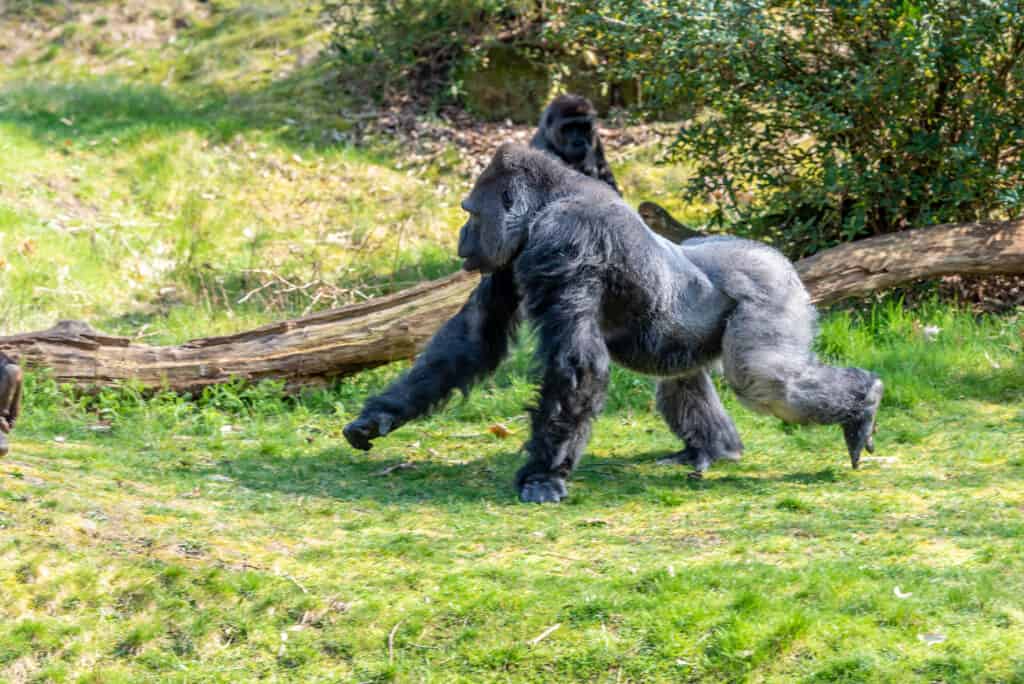There’s plenty of aggression, speed, and power in the gorilla confrontation in this video but there’s also a surprising amount of elegance and style about it too! There is clearly an issue between these two huge silverbacks, but, as startling as the fight is, you cannot help but admire how sure-footed and nimble these huge creatures are as they chase each other around the enclosure. They cross narrow bridges and climb up and down rocks with the skill of an accomplished gymnast.
Check Out The Entire Video Below!
Gorillas in Captivity
We learn from the video notes that this footage was taken at the Omaha Zoo in Omaha, Nebraska. This zoo can trace its origins back to 1894 and is a not-for-profit enterprise that places the welfare of animals at the heart of everything that they do.
Their Hubbard Gorilla Valley is a purpose-built gorilla enclosure that has meant that the zoo can play a major role in gorilla conservation.
As you can see in the video, the impressive complex includes lots of enrichment to try to make it as close to the gorilla’s natural habitat as possible by giving them opportunities for problem-solving, foraging, and investigation. There are complex timber climbing structures, tree limbs, waterfalls, and streams.

Despite their large size, they can travel at up to 25 mph and cover long distances
©Michael Verbeek/Shutterstock.com
Natural Gorilla Habitats
Gorillas are large primates found in several African states. They can live for up to 50 years and can weigh up to 440 pounds. Despite their large size, they can travel at up to 25 mph and cover long distances.
Gorillas are classified as omnivores but most eat only plants. They like shoots, leaves, bark, flowers, and stalks of many different plants and some types of gorillas also like fruit. Because they are so big, they need a lot of plant material and can eat up to 40 pounds of vegetation a day. The western lowland gorilla, however, will eat termites, ants, and snails as well.
These animals are critically endangered because human activity has led to a loss of their habitat. A combination of deforestation, subsistence hunting, trophy hunting, and disease has resulted in a dramatic reduction in their numbers. In the wild, gorillas like to live in tropical forests and mountain forests with certain subspecies inhabiting specific locations. For example, the western lowland gorillas are found between the Congo River and Cameroon.
They live in troops (or bands) that occupy a territory of around 16 square miles. During the day they walk around it to find food and at night they sleep in the trees or in nests that they make on the ground. There is usually a harem structure to the group where one male is the head and there are several adult females with whom he breeds. Younger offspring are also part of the troop. Males from different groups can come into conflict with each other.
We can only hope that the gorillas in this footage resolve their differences before too long!
The photo featured at the top of this post is © reliacalinescu/Shutterstock.com
Thank you for reading! Have some feedback for us? Contact the AZ Animals editorial team.





